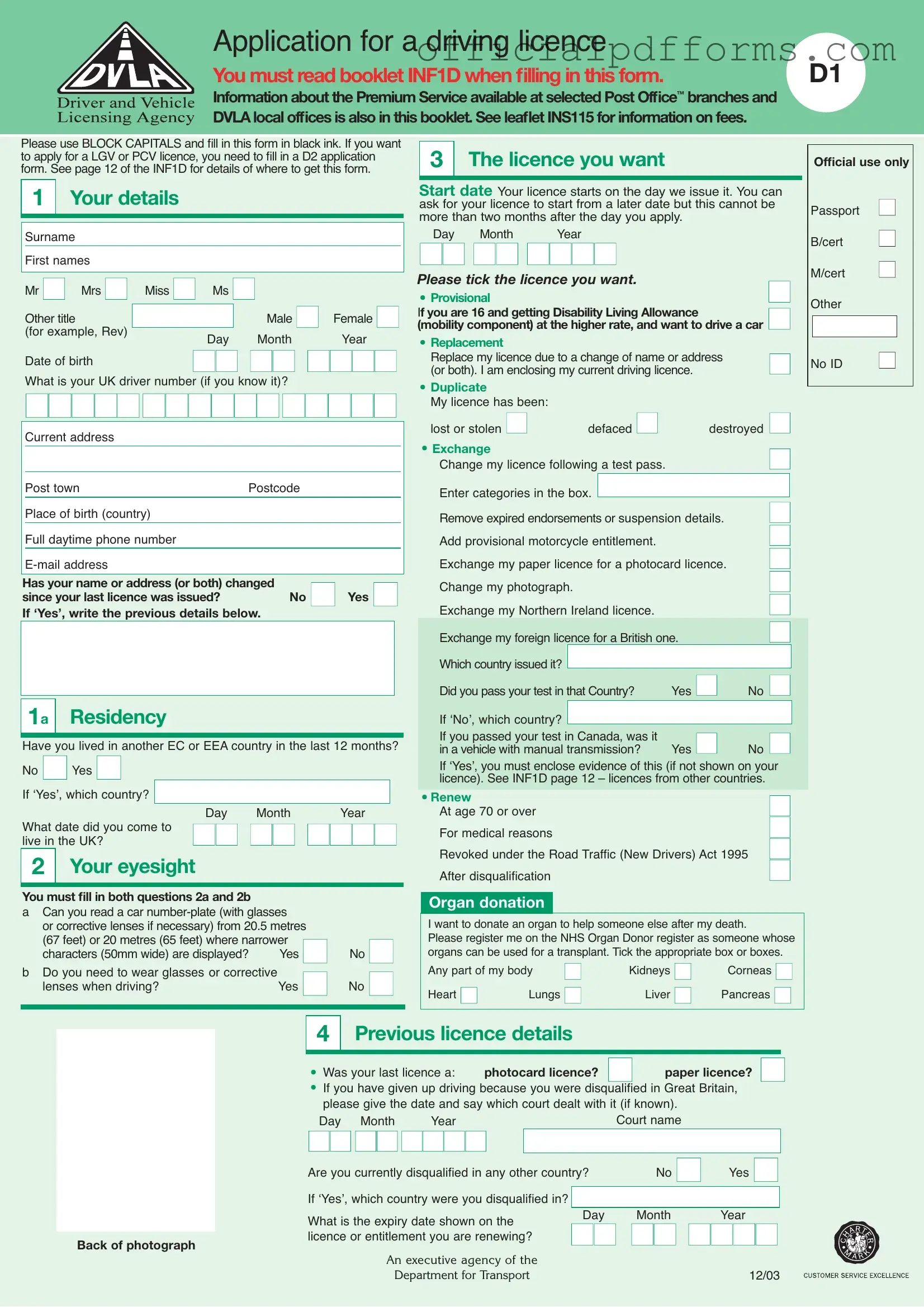The D1 DVLA form is primarily used to apply for a driving licence in the UK. This includes applications for new licences, replacements for lost or stolen licences, and exchanges of foreign or Northern Ireland licences. It is essential for anyone seeking to obtain or renew their driving credentials.
To fill out the D1 DVLA form correctly, you should use block capitals and black ink. It is crucial to provide accurate personal details, including your name, address, date of birth, and contact information. Additionally, you must answer all relevant questions regarding your eyesight, health, and previous licence details. Following the instructions in the accompanying booklet, INF1D, will help ensure your application is processed smoothly.
What should I do if my name or address has changed?
If your name or address has changed since your last licence was issued, you must indicate this on the form. You will also need to provide your previous details in the designated section. This ensures that the DVLA has the most current information on file, which is vital for your licence validity.
What are the eyesight requirements for applying for a driving licence?
Applicants must be able to read a car number plate from a distance of 20.5 meters (67 feet) or 20 meters (65 feet) if narrower characters are displayed. If corrective lenses are needed to meet this requirement, you must indicate that you need to wear glasses or contact lenses while driving.
The D1 form allows you to apply for various types of driving licences, including:
-
Provisional licence
-
Replacement licence due to a name or address change
-
Duplicate licence if lost or stolen
-
Exchange of a foreign or Northern Ireland licence
-
Renewal of a licence, especially for those aged 70 or over
Each type of application may require different documentation, so it is essential to check the specific requirements in the INF1D booklet.
When filling out the D1 form, you must disclose any health conditions that could affect your ability to drive. This includes conditions such as epilepsy, diabetes, serious psychiatric illness, and any significant visual impairments. If you have previously reported a medical condition, you may need to complete a medical questionnaire, which is available on the DVLA website.
What documents do I need to provide with my application?
To support your application, you must provide specific identity documents. Acceptable documents include:
-
Your UK passport
-
Your UK birth or adoption certificate
-
EC or EEA identity card
-
Travel document
If your name has changed, additional documents such as a marriage certificate or deed poll may be required to establish a clear link to your current name.
The Premium Service allows applicants to submit their D1 form at selected Post Office branches or DVLA local offices. This service can expedite the processing of your application, often providing same-day service. It is advisable to check the INF1D booklet for locations that offer this service and any additional fees that may apply.
If you make a mistake on the D1 form, it is essential to correct it before submitting your application. Errors can lead to delays or rejection of your application. If you notice a mistake after submission, contact the DVLA as soon as possible to rectify the issue. Always double-check your application for accuracy before sending it in.
The processing time for a driving licence application can vary. Typically, if you apply by post, it may take up to three weeks to receive your licence. However, using the Premium Service can significantly shorten this time. Always check the latest processing times on the DVLA website or in the INF1D booklet for the most accurate information.
